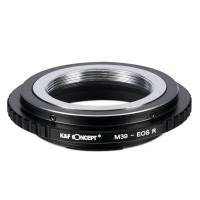Can We See Electrons With A Microscope ?
No, we cannot see electrons with a traditional optical microscope because electrons are much smaller than the wavelength of visible light. However, we can indirectly observe electrons using specialized microscopes such as a transmission electron microscope (TEM) or a scanning electron microscope (SEM). These microscopes use beams of electrons instead of light to create images of the sample being studied. The electrons interact with the sample and produce signals that can be detected and used to create an image. With these specialized microscopes, we can observe the behavior and movement of electrons in materials and gain a better understanding of their properties and behavior.
1、 Electron Microscopy
Electron Microscopy is a powerful tool that allows us to see the structure of materials and biological specimens at a very high resolution. However, it is important to note that we cannot see individual electrons with a microscope.
Electron Microscopy works by using a beam of electrons to scan the surface of a sample. The electrons interact with the atoms in the sample, producing an image that can be magnified and analyzed. The resolution of Electron Microscopy is much higher than that of traditional light microscopy, allowing us to see details at the nanoscale level.
While we cannot see individual electrons with a microscope, recent advances in Electron Microscopy have allowed us to study the behavior of electrons in materials and biological systems. For example, researchers have used Electron Microscopy to study the movement of electrons in graphene, a material with unique electronic properties. By observing the behavior of electrons in graphene, researchers hope to develop new technologies for electronics and energy storage.
In addition to studying the behavior of electrons, Electron Microscopy has also been used to study the structure of proteins and other biological molecules. By visualizing the structure of these molecules, researchers can gain insights into their function and develop new treatments for diseases.
Overall, while we cannot see individual electrons with a microscope, Electron Microscopy remains a powerful tool for studying the structure and behavior of materials and biological systems.

2、 Scanning Electron Microscopy
No, we cannot see electrons with a traditional optical microscope as the wavelength of visible light is much larger than the size of an electron. However, with the invention of Scanning Electron Microscopy (SEM), we can now visualize the surface of materials at a much higher resolution than traditional microscopes. SEM uses a beam of electrons instead of light to scan the surface of a sample, and the electrons interact with the atoms in the sample to produce an image.
In SEM, a focused beam of electrons is scanned across the surface of the sample, and the electrons that are scattered or emitted from the sample are detected and used to create an image. The resolution of SEM is much higher than traditional optical microscopes, with the ability to visualize structures as small as a few nanometers.
However, even with SEM, we are not directly seeing the electrons themselves, but rather the interactions between the electrons and the sample. The latest point of view is that while we cannot directly see electrons, we can use advanced techniques such as transmission electron microscopy (TEM) to visualize the behavior of electrons in materials. TEM uses a beam of electrons that passes through a thin sample, and the electrons that are transmitted through the sample are used to create an image. With TEM, we can visualize the atomic structure of materials and observe the behavior of electrons in real-time.

3、 Transmission Electron Microscopy
Yes, we can see electrons with a microscope, specifically with a Transmission Electron Microscope (TEM). TEMs use a beam of electrons instead of light to create an image of the sample being studied. The electrons pass through the sample and interact with its atoms, producing an image that can be magnified up to millions of times.
In a TEM, electrons are emitted from a heated filament and accelerated towards the sample by an electric field. The electrons then pass through a series of electromagnetic lenses that focus the beam onto the sample. As the electrons pass through the sample, they interact with its atoms, scattering and diffracting in different directions. These interactions are captured by a detector and used to create an image of the sample.
TEMs have revolutionized our understanding of the microscopic world, allowing us to see structures and processes at the atomic and molecular level. They have been used to study a wide range of materials, from biological samples to semiconductors and metals.
Recent advances in TEM technology have further improved its capabilities, such as the development of aberration-corrected lenses that allow for even higher resolution imaging. However, there are still limitations to what can be seen with a TEM, as some samples may be too thick or too sensitive to withstand the electron beam. Nonetheless, TEMs remain a powerful tool for studying the structure and behavior of matter at the nanoscale.

4、 Electron Diffraction
Electron microscopy has revolutionized our understanding of the microscopic world, allowing us to see structures and details that were previously invisible. However, the question of whether we can see electrons themselves with a microscope is a bit more complicated.
In short, the answer is no, we cannot see electrons with a traditional optical microscope. This is because electrons are much smaller than the wavelengths of visible light, which means they cannot be resolved by the lenses in a microscope. However, there are other techniques that allow us to indirectly observe electrons.
One such technique is electron diffraction, which involves firing a beam of electrons at a sample and observing the pattern of scattered electrons that results. By analyzing this pattern, scientists can learn about the structure and properties of the sample, including the arrangement of its atoms and molecules.
Another technique that allows us to indirectly observe electrons is scanning tunneling microscopy (STM). This technique involves scanning a sharp tip over the surface of a sample, and measuring the flow of electrons between the tip and the sample. By analyzing this flow of electrons, scientists can create images of the sample's surface with atomic-scale resolution.
In recent years, there has also been growing interest in using advanced imaging techniques such as cryo-electron microscopy (cryo-EM) to study the structure of biological molecules and other complex systems. While these techniques do not allow us to directly observe electrons, they do provide a wealth of information about the behavior and interactions of electrons within these systems.
Overall, while we cannot see electrons themselves with a traditional microscope, there are a variety of techniques that allow us to indirectly observe their behavior and interactions. As our understanding of these techniques continues to grow, we can expect to gain even deeper insights into the microscopic world around us.








































